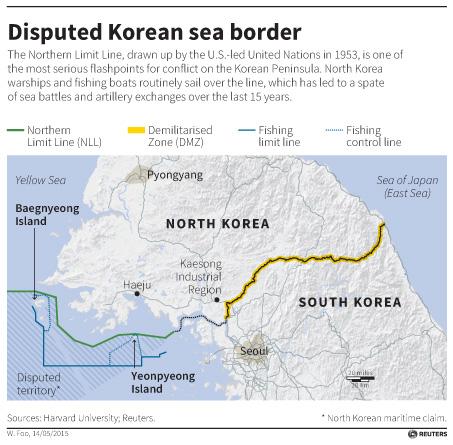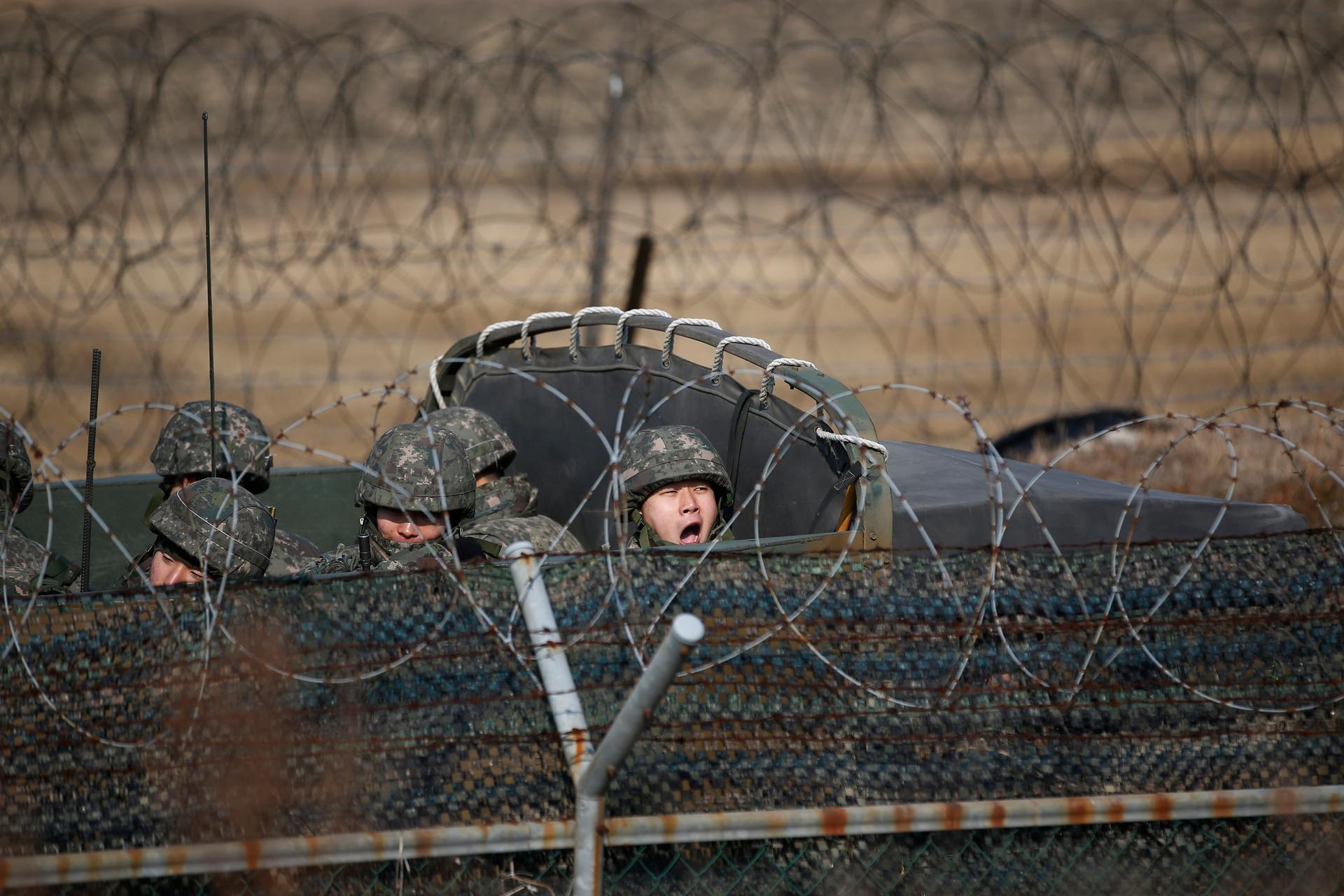A South Korean soldier, in a military truck, yawns as they travel along a barbed-wire fence near the demilitarized zone separating the two Koreas, in Paju, February 19, 2015.
North and South Korea are at it again, trading threats and attacks across the de-militarized zone (the DMZ) that separates the two countries. Last Thursday, the war of words escalated as soldiers exchanged artillery and rocket fire, according to the South Korean Defense Ministry.
The latest tensions erupted between the two countries after two South Korean soldiers were wounded by landmines in the DMZ last week. South Korea blamed the North for sneaking into the zone to plant the mines. But in the charged atmosphere on the Korean peninsula, the South had to be careful in its response. So it turned to a tactic it hadn't used in 11 years — and knew would infuriate the North's leaders.
South Korea began blasting recordings criticizing the North's leaders from loudspeakers on its side of the border. The messages are so loud they can sometimes be heard a dozen miles inside North Korea. The North promptly called this a declaration of war and threatened to blow up the speakers.
At first, North Korea just retaliated in kind, blaring its own propaganda over the border. Then, on Thursday, its soldiers launched a projectile towards South Korea's speakers. South Korea responded with artillery fire. The two countries engaged in tense talks before agreeing to de-escalate tensions on Monday.
Such clashes in the Korean Peninsula are hardly new. The two countries never signed a peace treaty after their war in the 1950s, so they remain technically at war. Their ceasefire has mostly held, but as you can see from the highlights of their conflict below, tensions have erupted regularly.
June 1950
The Korean war between North and South Korea begins, with help from the Soviet Union and China on one side, and the US and the United Nations on the other.
July 1953
The Korean war ends when a ceasefire agreement is signed. The Korean Demilitarized Zone (DMZ) is created to separate the two countries.
October 1966
The Korean DMZ conflict begins as troops from both countries invade the demilitarized zone and engage in skirmishes.
January 1968
North Korean commandos attempt to assassinate South Korean President Park Chung-Hee and are stopped just a few hundred yards from his residence.
August 1974
There is another assasination attempt of President Park Chung-Hee by a North Korean commando in Seoul. First Lady Chung-Hee is killed.
April 1996
North Korea sends thousands of military troops into the DMZ as it announces it will no longer adhere to the armistice of 1953.
June 1999
Known as the Battle of Yeonpyeong, North Korean patrol ships cross the disputed maritime border, leading to clashes between several ships. At least 20 North Korean military personnel are killed.

June 2002
Two North Korean boats again cross the maritime border in the Yellow Sea, engage South Korean patrol ships and are quickly forced to retreat. About 30 North Koreans and four South Koreans are killed.
October 2007
South Korean President Roh Moo-hyun walks across the Korean Demilitarized Zone for talks with Kim Jong-il. The talks call for peace on the Korean peninsula and an update to the 1953 armistice.
November 2009
The two sides exchange fire near the maritime border for the first time in seven years.
March 2010
A South Korean naval vessel sinks, killing 46 sailors on board. A month later, South Korean researchers conclude the cause was a North Korean torpedo.
November 2010
North Korea shells Yeonpyeong island near the disputed maritime border in the Yellow Sea, killing two South Korean marines and two citizens. South Korea returns fire using fighter jets.
March 2014
Two drones, apparently form North Korea, are found in South Korea carrying pictures of South Korean government buildings.
October 2014
Fire is exchanged between two patrol boats in the Yellow Sea. Days later, there is more fire as balloons allegedly carrying anti-North pamphlets are gunned down.
August 2015
The two countries blare propaganda over the DMZ. Artilley fire is exchanged. The two countries engage in tense talks before agreeing to reduce tensions a few days later.
